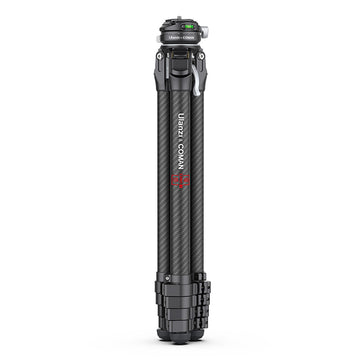Unlock the Secrets to Crafting the Ultimate Professional Camera Rig!
In the world of filmmaking and photography, a professional camera rig setup is more than just a collection of equipment; it’s the backbone of your creative vision. Whether you’re shooting a documentary, a short film, or capturing stunning stills, the way you set up your rig can significantly impact the quality of your work. A well-constructed rig allows for greater stability, flexibility, and control, ultimately leading to more professional results. In this article, we will delve into the essential components of a professional camera rig, explore different configurations suited for various shooting styles, and share best practices to help you achieve optimal performance. By the end, you’ll be equipped with the knowledge to craft your own camera rig that meets your artistic needs.

Understanding Camera Rig Components
To create a professional camera rig, understanding its essential components is crucial. At its core, a camera rig typically consists of a camera mount, stabilization systems, and various accessories that enhance usability and functionality. The camera mount is where the camera body attaches, ensuring it remains secure while allowing for easy adjustments. Stabilization systems, such as gimbals or shoulder pads, are vital for minimizing shake and maintaining smooth footage, especially during dynamic shots. Accessories play a significant role as well; items like follow focus systems help in achieving precise focus without having to touch the camera, while external monitors provide a larger view of your scene, making it easier to frame shots accurately. During a recent shoot with a friend, we discovered how a well-balanced rig dramatically improved our handheld shots, eliminating the jitter that often accompanies unsteady hands. This experience underscored the importance of each component working in harmony to create a seamless shooting experience.
Choosing the Right Configuration
The configuration of your camera rig can vary widely based on the shooting style and the environment. For instance, handheld setups are ideal for capturing dynamic action, allowing for mobility and spontaneity. These rigs typically feature lightweight components to minimize fatigue during long shoots. Conversely, tripod configurations are perfect for static shots where stability is paramount, providing a solid base for capturing high-quality images without any movement. Shoulder rigs are another popular configuration, offering a balance between mobility and stability, allowing filmmakers to shoot for extended periods without compromising on support. A friend of mine, a budding filmmaker, opted for a shoulder rig for a short film project, and the results were impressive. The rig enabled him to move through tight spaces while maintaining a steady shot, showcasing how the right configuration can enhance creativity and efficiency during production.
Best Practices for Setting Up Your Rig
Assembling your camera rig requires careful attention to detail to ensure optimal performance. One critical aspect is weight distribution; balancing the rig properly can prevent fatigue and improve control while shooting. Keep heavier components closer to your body’s center of gravity to maintain balance. Additionally, consider the height of your rig. Adjusting the rig to eye level can save time and prevent strain on your neck and back. During a collaborative project, I learned the hard way about the importance of ease of use. My friend and I spent unnecessary time fumbling with poorly placed accessories, which could have been avoided with thoughtful rig assembly. Lastly, ensure that all components are tightened securely before shooting to avoid any accidental shifts during your project. Following these best practices not only enhances your shooting experience but also allows you to focus more on your creative vision.
Common Mistakes to Avoid
Even seasoned filmmakers can fall into common pitfalls when setting up their camera rigs. One frequent mistake is neglecting to test the setup before the shoot. Failing to check the balance and stability can lead to frustrating issues on set. Another common error is overloading the rig with unnecessary accessories, which can make it cumbersome and difficult to maneuver. Simplifying your setup often leads to better results, as it allows you to focus on the shot rather than the gear. Lastly, ignoring maintenance can be detrimental; a dirty lens or loose screw can ruin an otherwise perfect take. By being aware of these common mistakes, you can ensure a smoother, more efficient shooting experience.
Final Thoughts on Your Camera Rig Setup
In conclusion, crafting a professional camera rig is a blend of understanding its components, choosing the right configuration, and applying best practices for setup. Each aspect plays a vital role in enhancing the quality of your work and making your shooting experience more enjoyable. Whether you’re a hobbyist or a seasoned pro, taking the time to refine your rig can lead to stunning results and elevate your storytelling capabilities. So, as you embark on your next project, remember the insights shared in this article and apply them to craft a camera rig that truly supports your creative vision.



